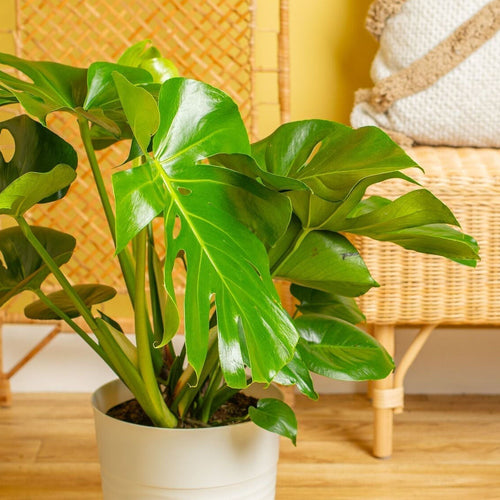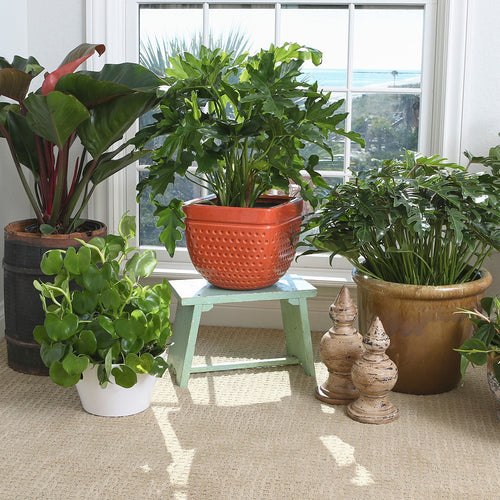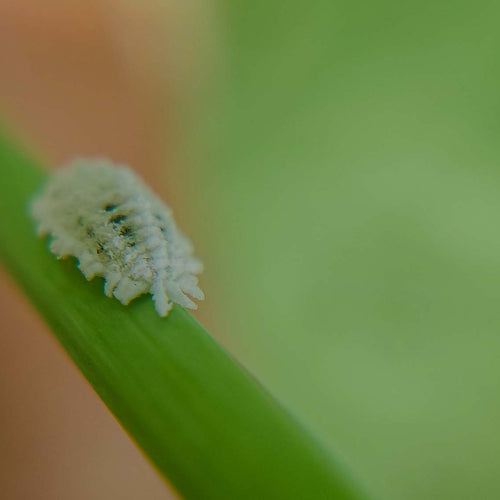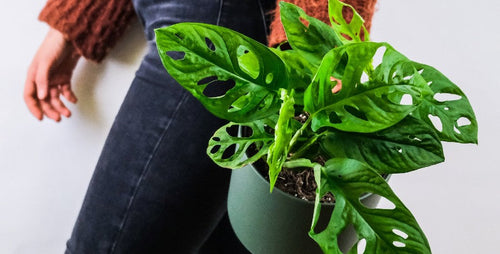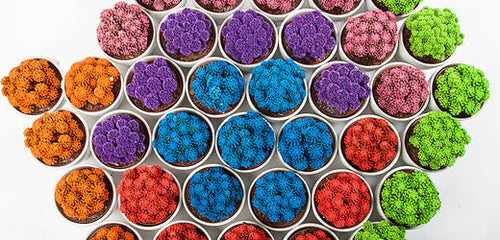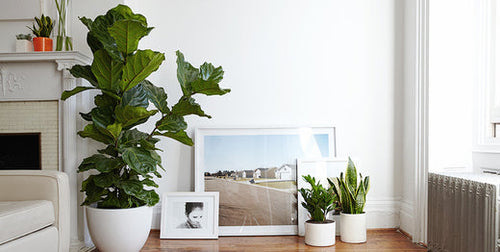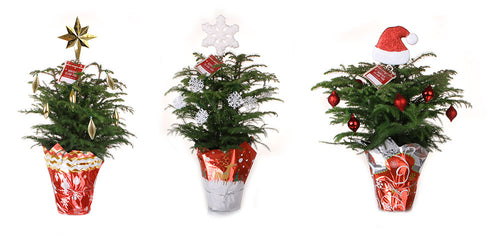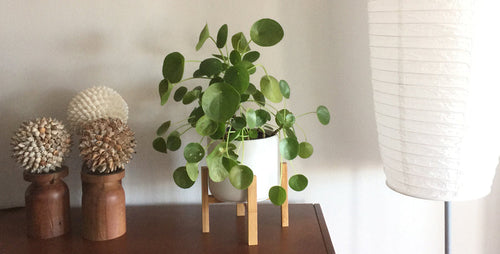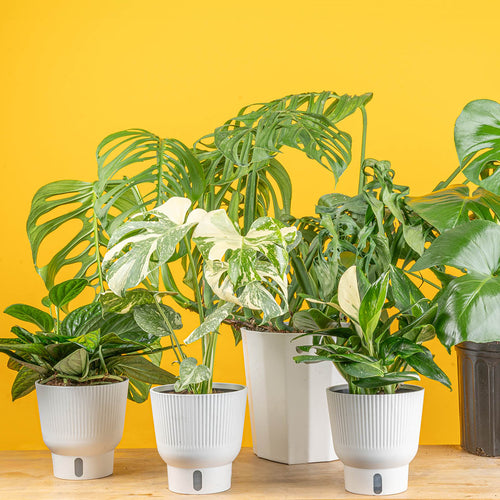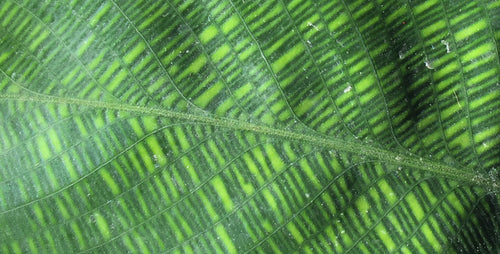
Winter: Contemporary Cool
Create a mix of sculptural plants in white containers for instant modern mantle appeal. Beauties such as colorful succulents, stripy haworthia, and gray-green snake plant make ideal elements for contemporary chic. Choose same-hue containers in different shapes and heights to create a clean, minimalist look. The succulent dish garden is made with a serving bowl, so there is no drainage for excess water, so take care to water minimally; these plants can go weeks without hydration. Use sand or small pebbles as mulch on top of the soil to help conserve moisture.
Succulent Care
Plants such as haworthia, echeveria, and panda plant like bright light and minimal water. Succulents store water in their leaves, so they don’t need as much hydration as other houseplants.
Get tips for watering houseplants.
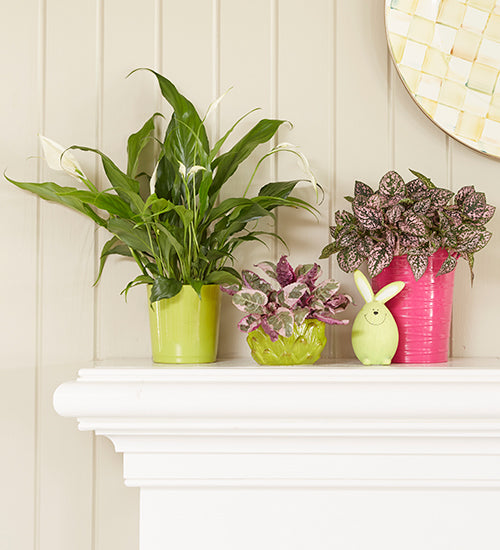
Spring: Rebirth
Create a mantlescape as colorful as a basket of Easter eggs. Choose a mix of chartreuse and pink pots and fill them with a clutch of perky plants. peace lily’s glossy green leaves and snow white flowers or spaths contrast beautifully with the green, white, and pink foliage of waffle plant. A hot-pink container packed with pink-and-green polka-dot plant looks stunning. Add an adorable smiling bunny ornament and you are set for spring.
Spring Houseplant Care
Spring (and summer) are the best times to give your houseplants a new lease on life. Fertilize them, remove any faded or dried leaves, and repot them in fresh soil if they are too crowded.
Get tips for repotting your houseplants.

Early Summer: Beautiful Bonsai
An elegant line of bonsai is a simple way to add minimalist style to your mantle and home. Ready-made bonsai come planted in their own designer pots complete with moss and pebble mulch. Singular and simple, bonsai represent a long tradition of growing and training trees into elegant forms. From left to right: Juniper, Ginseng Ficus (Ficus retusa), Sago Palm, Fukien Tea (Carmona retusa), and Formosana (Ficus formosana).
Bonsai Care
These tiny trees require minimal care. They enjoy medium to bright light. Take care not to overwater these little trees; this is a common way to kill them. Fertilize in spring and summer.
Get more tips for growing bonsai.

Summer: Cottage Style
Containers in a variety of blue hues packed with leafy houseplants create a breezy summer cottage-style mantlescape. Mix tropical and woodland species, such as dracaena, peace lily, aralia, and philodendron in a single container. Add single pots of peperomia and mahogany fern to complete the scene. Choose a mix of tall and small plants to create an interesting and diverse mantlescape.
Summer Houseplant Care
Fertilize most houseplants in spring or summer. A little addition of granular or water-soluble fertilizer will encourage new growth, keeping plants looking fresh and leafy.

Summer: Cottage-Style Bowl
A low ceramic bowl filled with a textural mix of houseplant foliage is the ideal mantle mixer. When combining houseplants in the same container, use plant combinations that exhibit different growth habits (some tall, some trailing) textures (some smooth, some rough), colors (variegated plants are splashed with white or yellow accents on green leaves) and leaf shapes (some round, some strappy). In this bowl, dracaena, peace lily, aralia, and philodendron fill out the bowl and will offer a beautiful centerpiece all year round.
Mixed Bowl Plant Care
Houseplants grow at different rates, so it you want to keep your bowl looking the same, snip off new growth. When plants become too large, remove them from the bowl and replace with smaller versions. Clip off dead leaves to keep the bowl looking fresh and healthy.

Fall: Autumnal Hues
The colorful charms of Red Aglaonema is ideal for any season, but its rich colors are simply stunning on an autumn mantle. Green leaves are streaked and stained with rosy red. Set off the gorgeous foliage by placing this easy-care houseplant into a footed vase or urn where the plant’s foliage is highlighted. Use autumnal fruit or vegetables such as red and green apples or artichokes and pomegranates as easy (and edible) accessories.
Red Ag Care
Red aglaonema thrives in any type of light: low, medium, or bright, but has the best color in medium or indirect light. Water red aglaonema when the soil feels dry. Keep in mind that this easy-care houseplant can go a week or two without water.

Thanksgiving: Ivy Trio
Ivy times three is a simple equation for a beautiful mantle. Classic ivy in three different leaf types (variegated, heart-shape, and thin leaf) make a textural mantlescape. To get the look, wrap ivy pots in burlap, then set them into matching burnished copper containers. Accent the mantle with decorative accents (such as a trio of Jonathan Adler bottles).
Ivy Care
These vining beauties are super easy to grow. They thrive in medium to low light and will spread downward, making a beautiful sweep of foliage from a hanging basket or tall planter. In autumn, when you turn on your furnace, warm forced air can dry out the leaves. Spritz plants with a mister to raise the humidity level around the plants.

Holiday: Mini Christmas Tree
Ho-ho-ho! Add a little holiday flair to a Norfolk Island pine by adding plastic berries. Use lightweight decorations on these plants because their supple limbs can’t take a lot of weight without sagging. Fill the base of the container with a bubbly mix of red, gold, and green ornaments.
Norfolk Island Care
Norfolk Island pines like bright to medium bright light. Changing out different colored cachepots allows you to change the look. Be careful not to overwater your plant; the roots will rot if they stand in water. Norfolk Island pines like to be fed, but wait until spring to do so.







